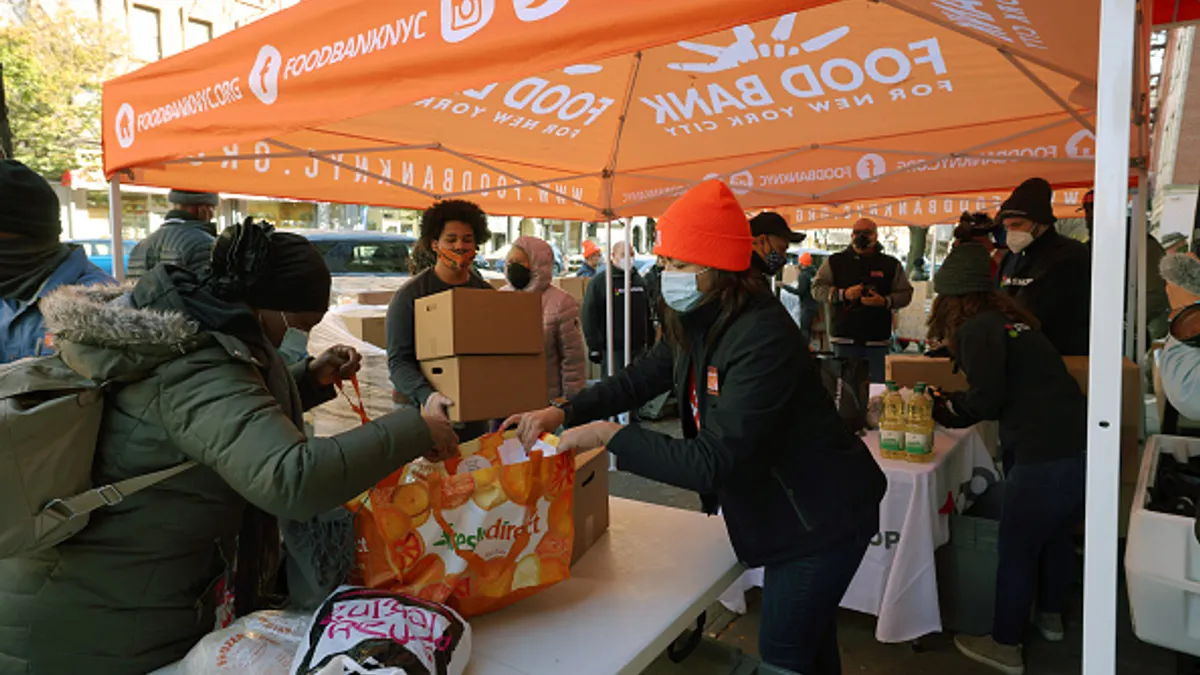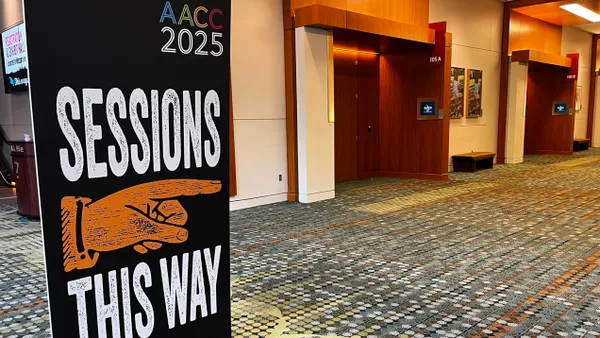Dive Brief:
- Almost two in five students enrolled in Utah colleges experienced food insecurity in 2021, according to a new report from Utahns Against Hunger, an anti-hunger nonprofit.
- Overall, 17.7% reported limited access to quality food with little variety. Some 21.1% of students said a lack of food disrupted their eating patterns and reduced the amount they ate.
- Food insecurity disproportionately affected students of color, students who act as family caregivers and rural students, the report found. Researchers surveyed almost 5,700 students from Utah colleges over six weeks in late 2021.
Dive Insight:
In 2020, approximately 11% of U.S. households experienced inconsistent access to enough food for a healthy life, according to the U.S. Department of Agriculture. Both the COVID-19 pandemic and the rising cost of food have exacerbated the issue.
Lacking consistent access to food affects students' ability to do well and maintain a strong transcript. Researchers found that food-insecure students performed worse in the classroom than their counterparts, with an average GPA of 3.4 compared to 3.59.
The Utah survey found almost half of students of color, 47.9%, experienced food insecurity, compared to 36% of their White counterparts. The report defines students of color as those who are Hispanic or Latino, Asian, Black, American Indian, or Pacific Islander or Hawaiian.
Among rural Utah students, 44.5% are food insecure, compared to 37.4% of the state’s urban students.
Students who are family caregivers disproportionately experienced food insecurity. Over half of those who care for parents or grandparents, 56%, are food insecure. The same is true for 68% of those who take care of siblings.
Female students were more likely to be food insecure, at a rate of 39.9%, than male students, at 35.2%. Meanwhile, 60.6% of nonbinary students said they experienced food insecurity in the past year. While researchers did not ask about sexual orientation, the responses from nonbinary students suggest LGBTQ individuals are the most at-risk student population, according to the report.
For college students, getting help can be more difficult than it is for other people.
Prior to the pandemic, students enrolled in higher education were typically ineligible for federal food assistance through the Supplemental Nutrition Assistance Program. Of the college students who would likely be eligible for SNAP, more than half did not participate in the program, according to a 2018 Government Accountability Office report.
The government temporarily relaxed SNAP rules to allow more college students to qualify during the pandemic, but they will largely lose eligibility when the public health emergency is declared over.
Food insecurity is worse among socially isolated students. Over half of students who see people they care about less than once a week are food insecure, according to the Utah survey. That’s compared to about one-third of students who see those people more than five times a week.
Being employed did not fully protect students. Of respondents who worked full time while taking classes, 38% said they experienced food insecurity.














